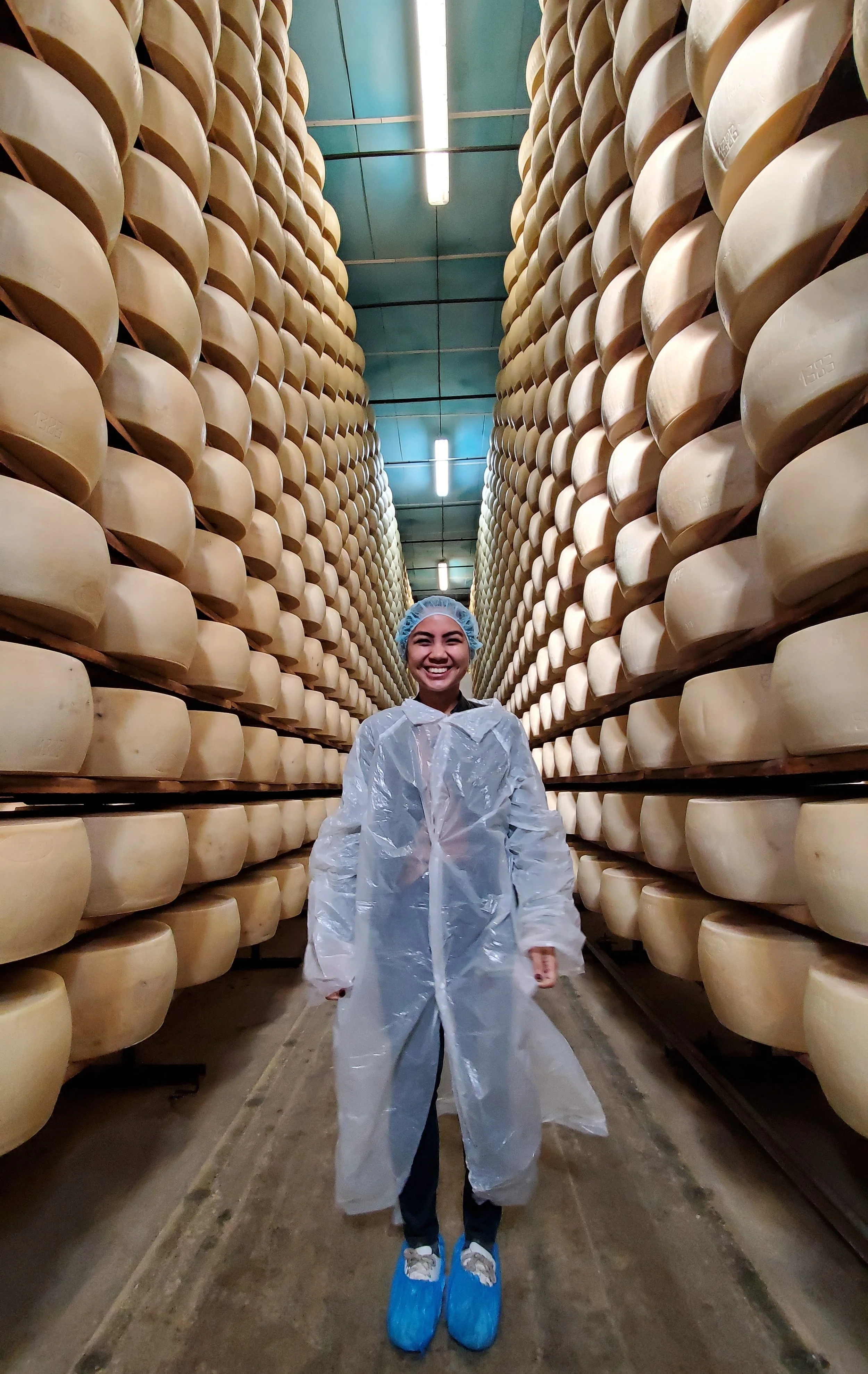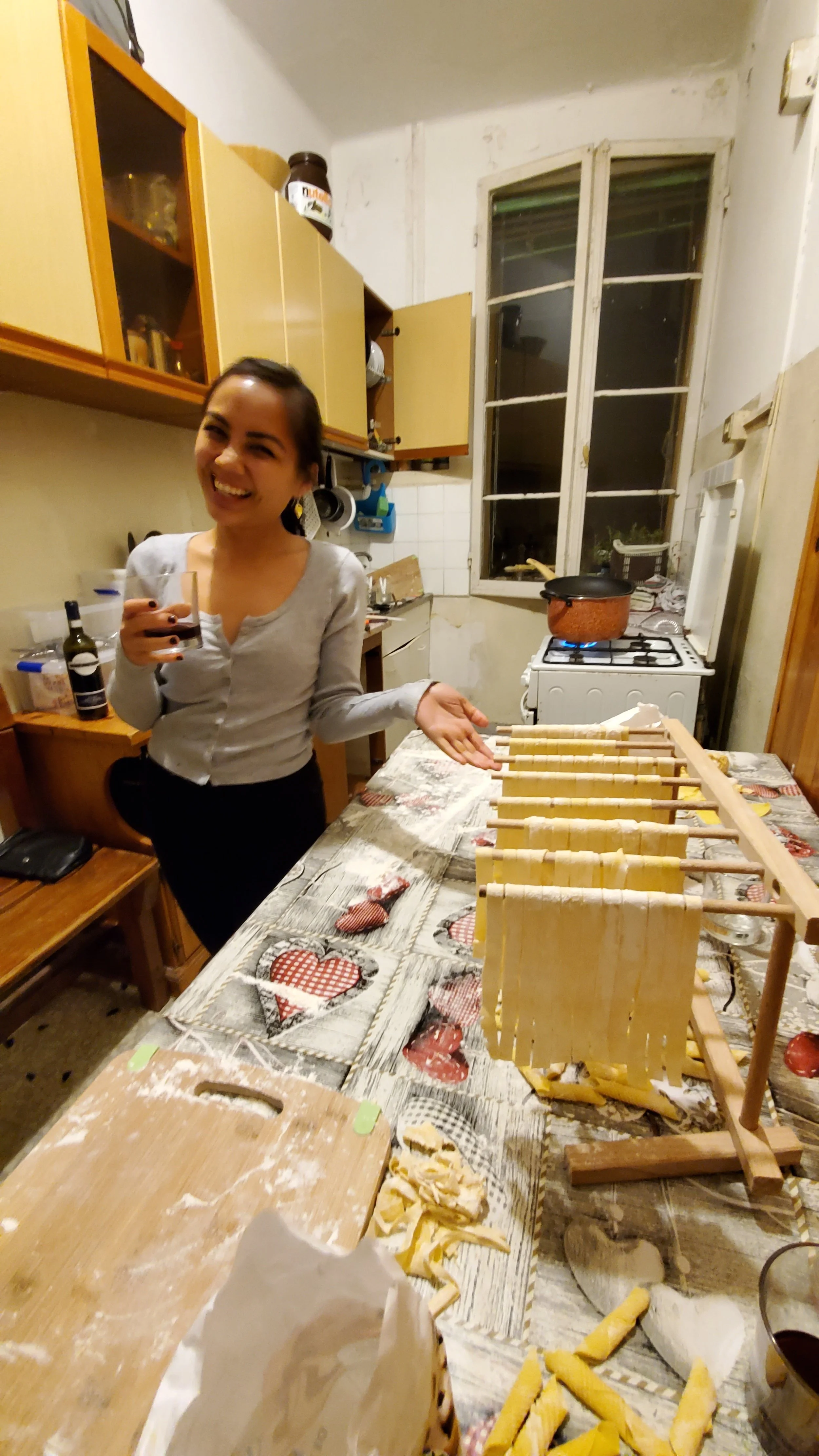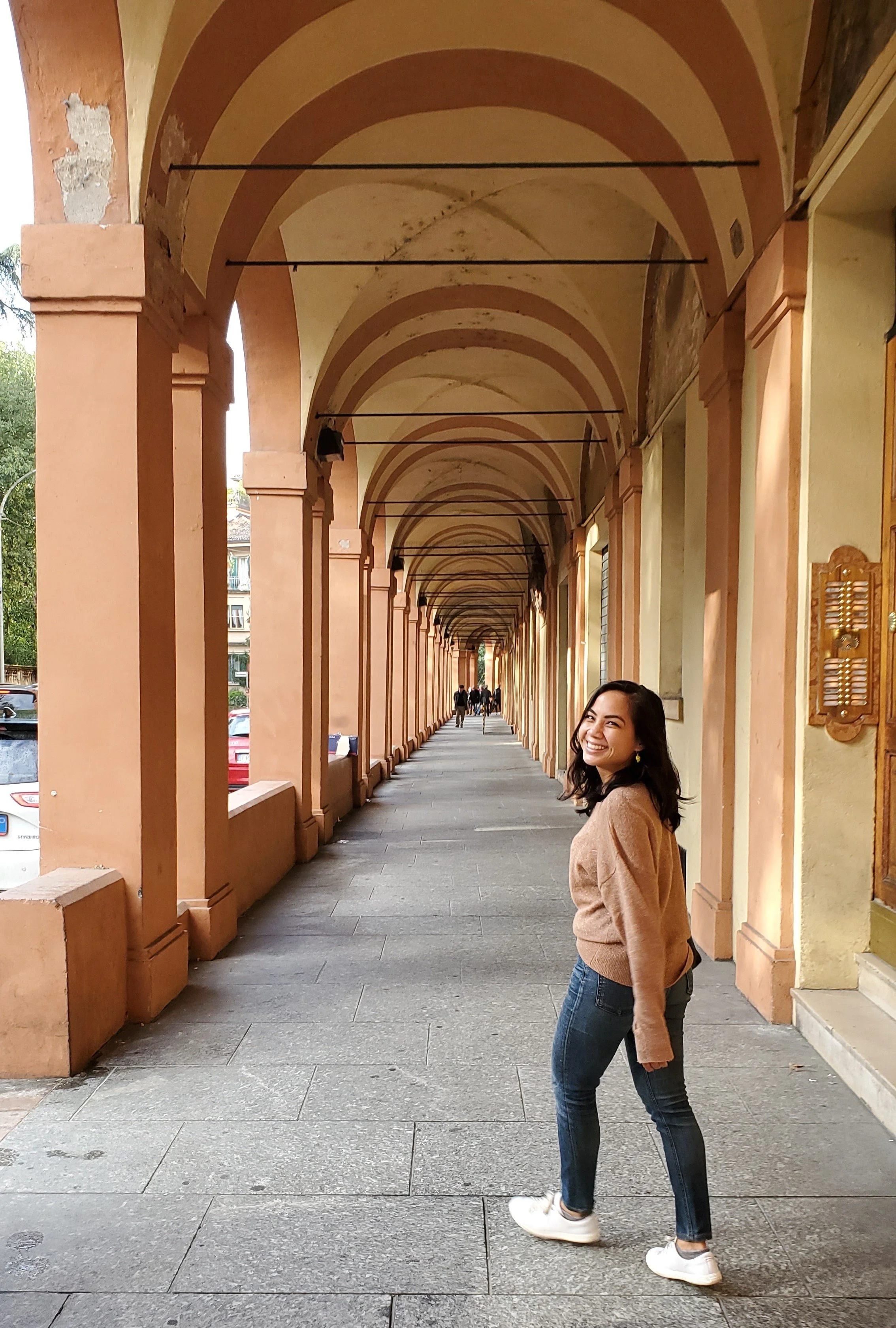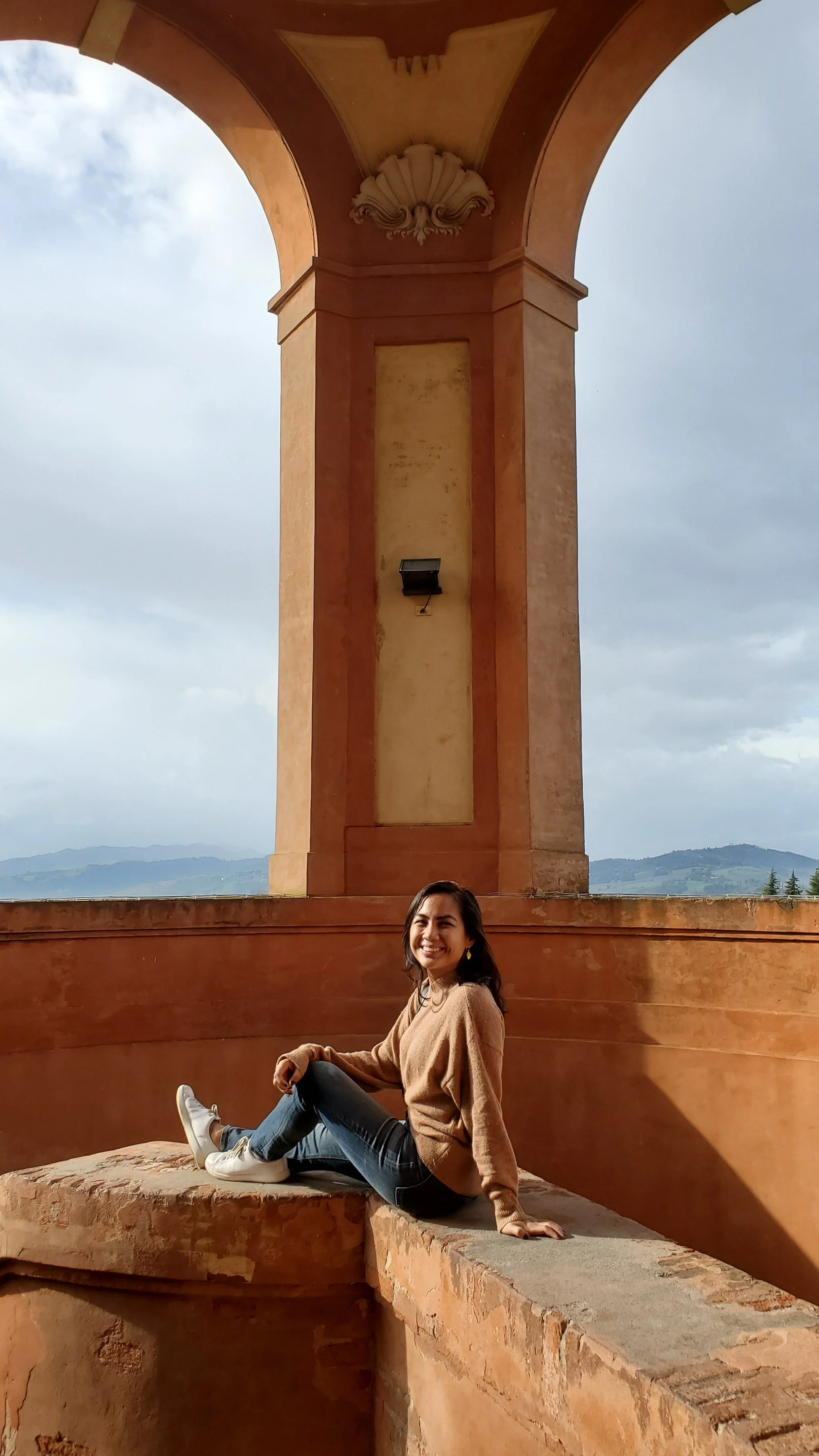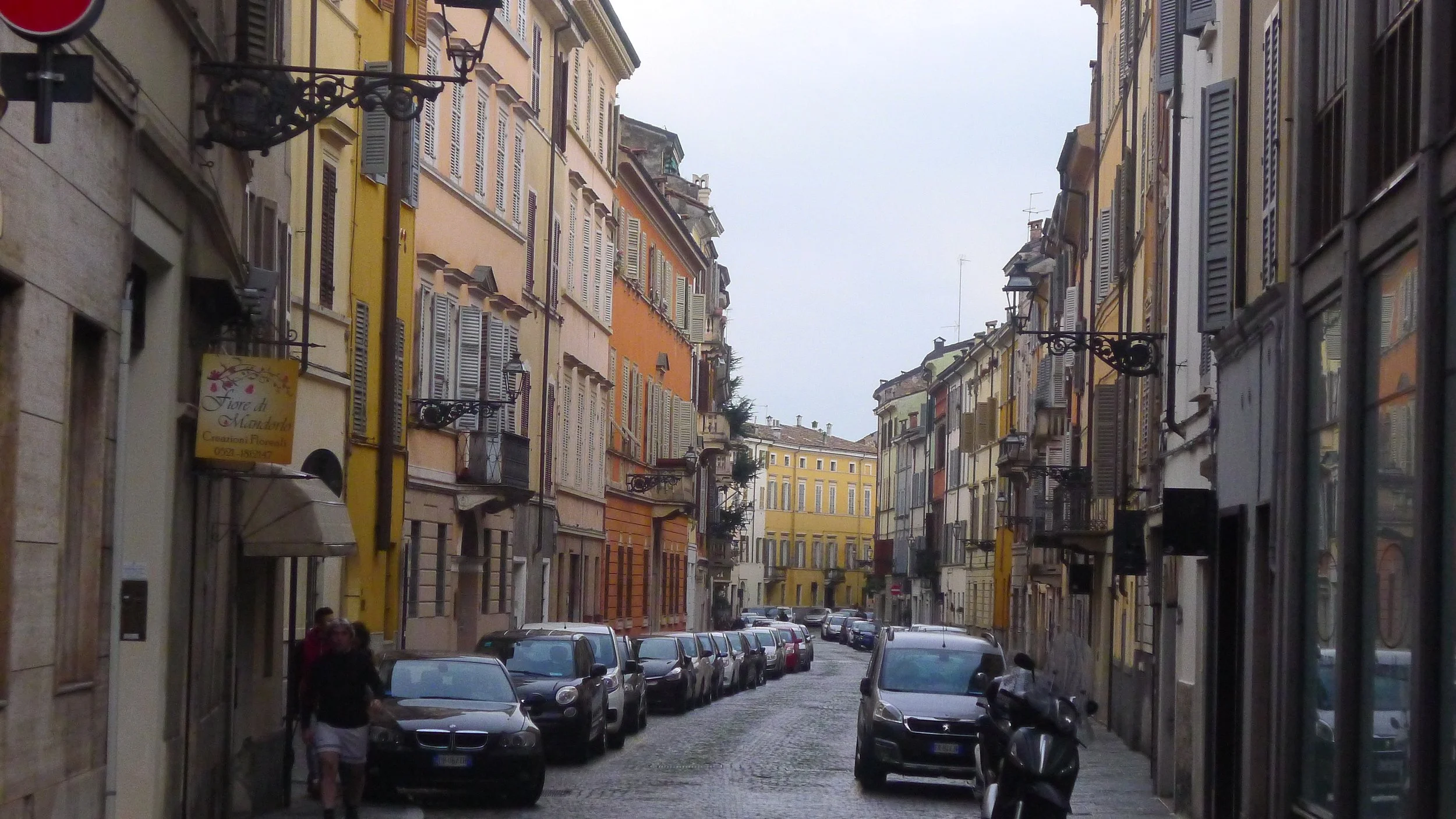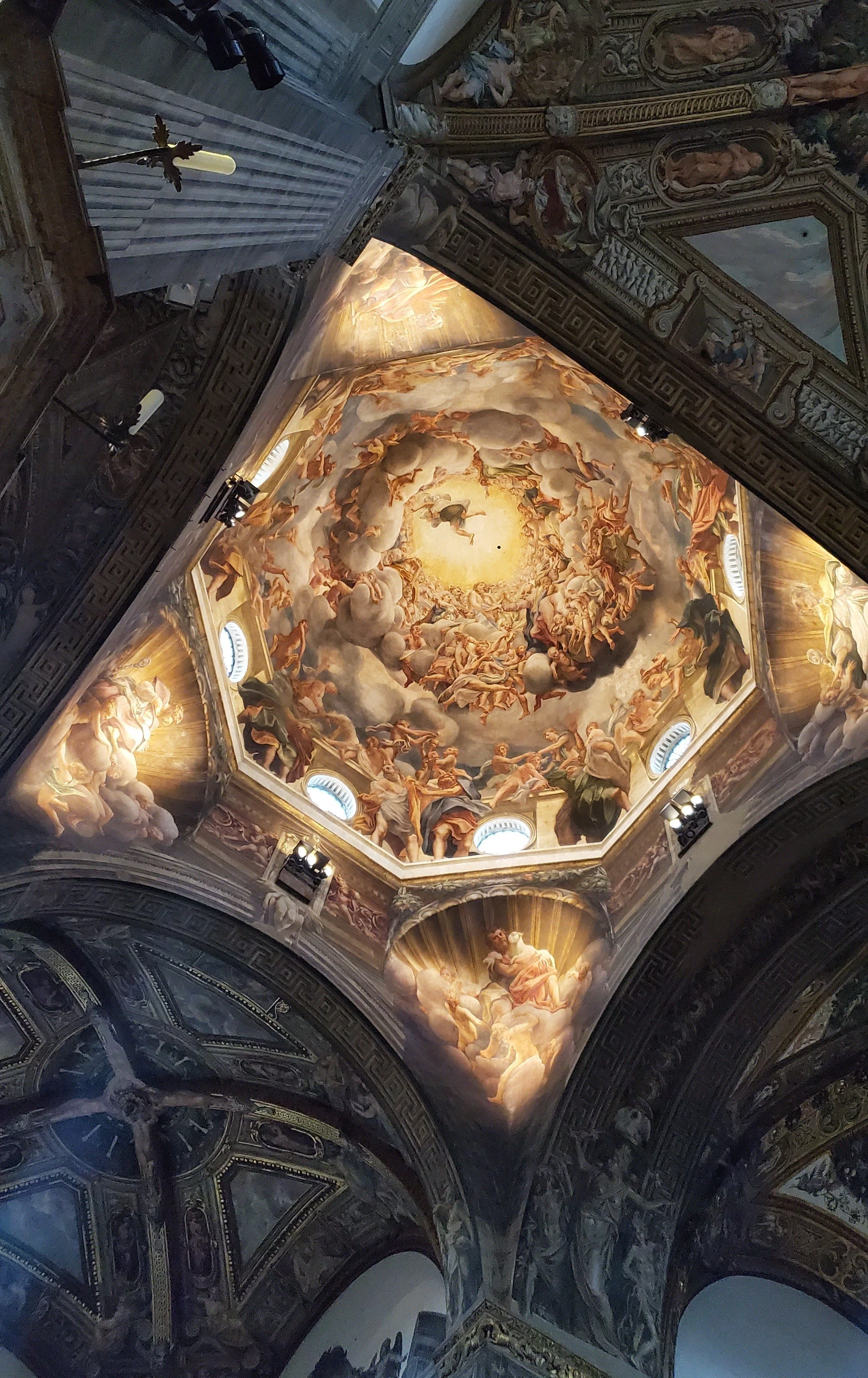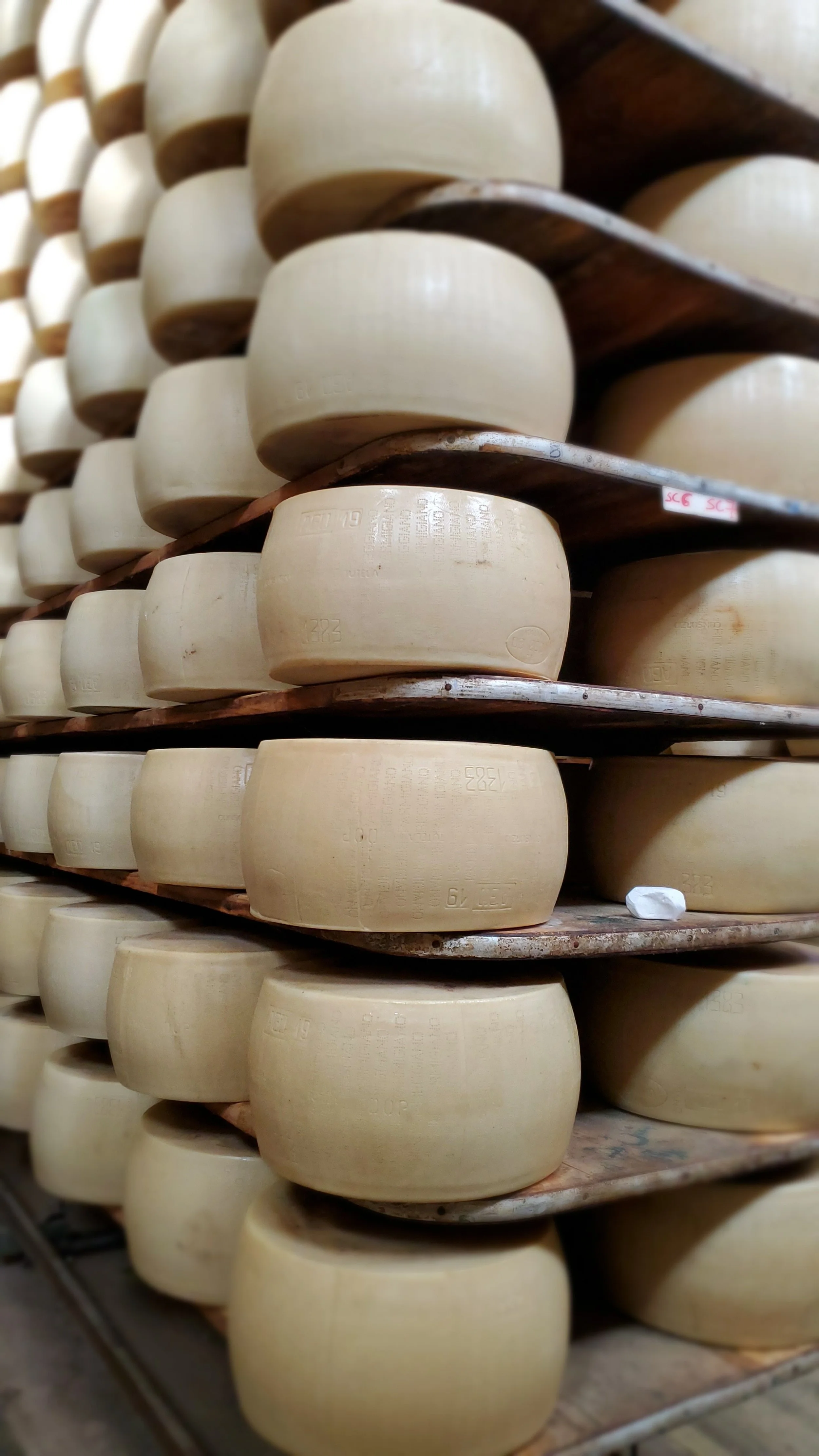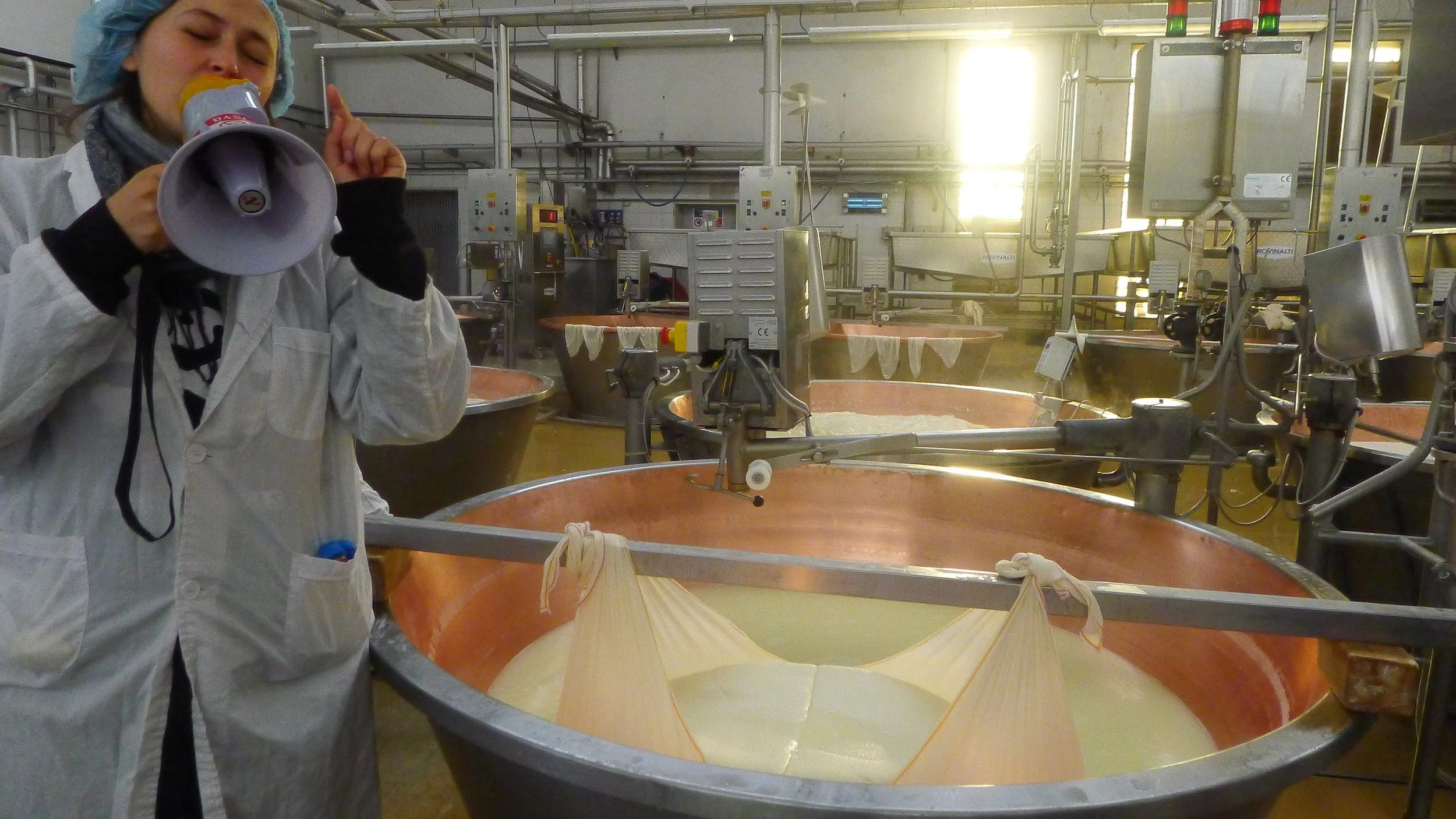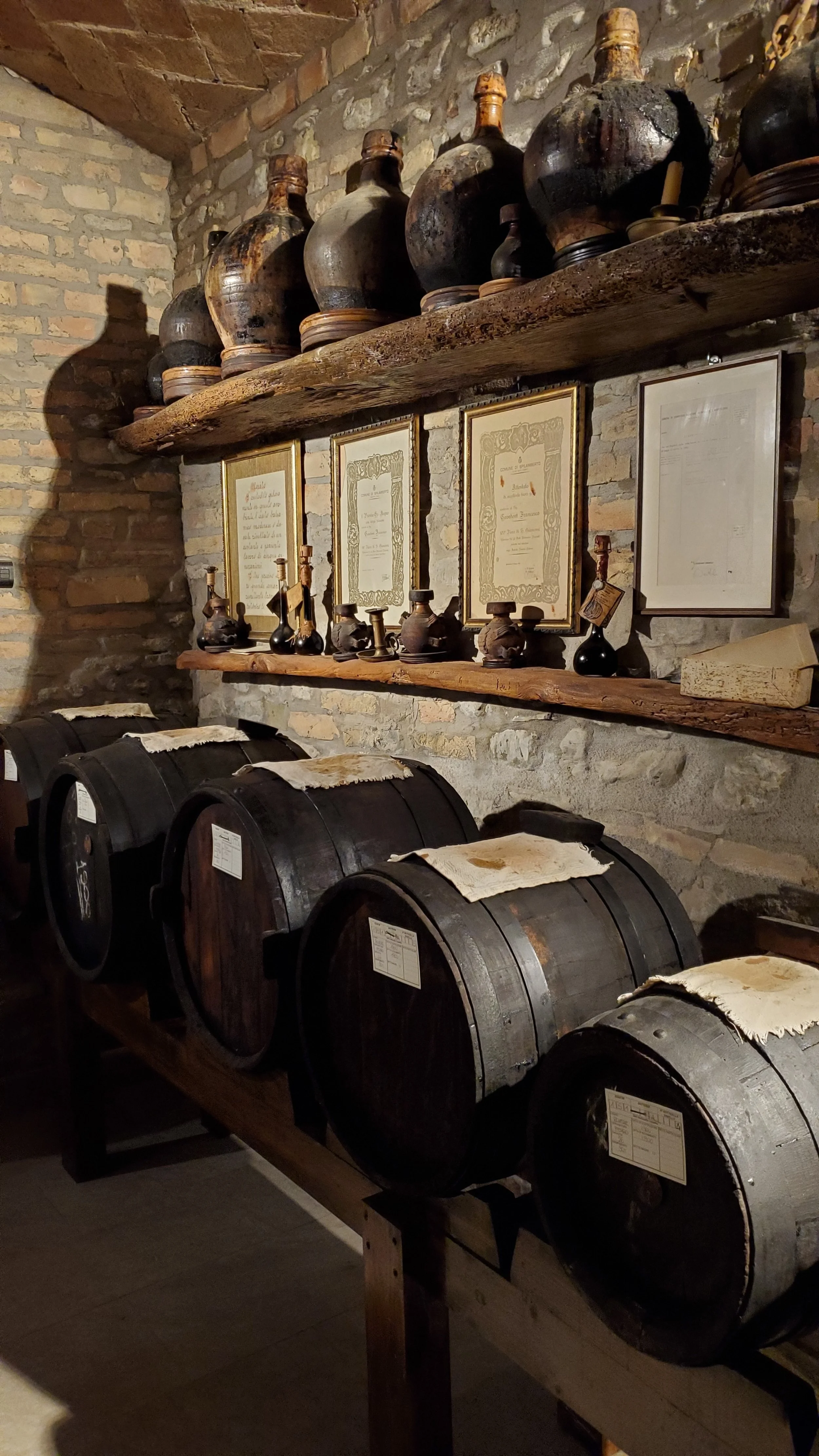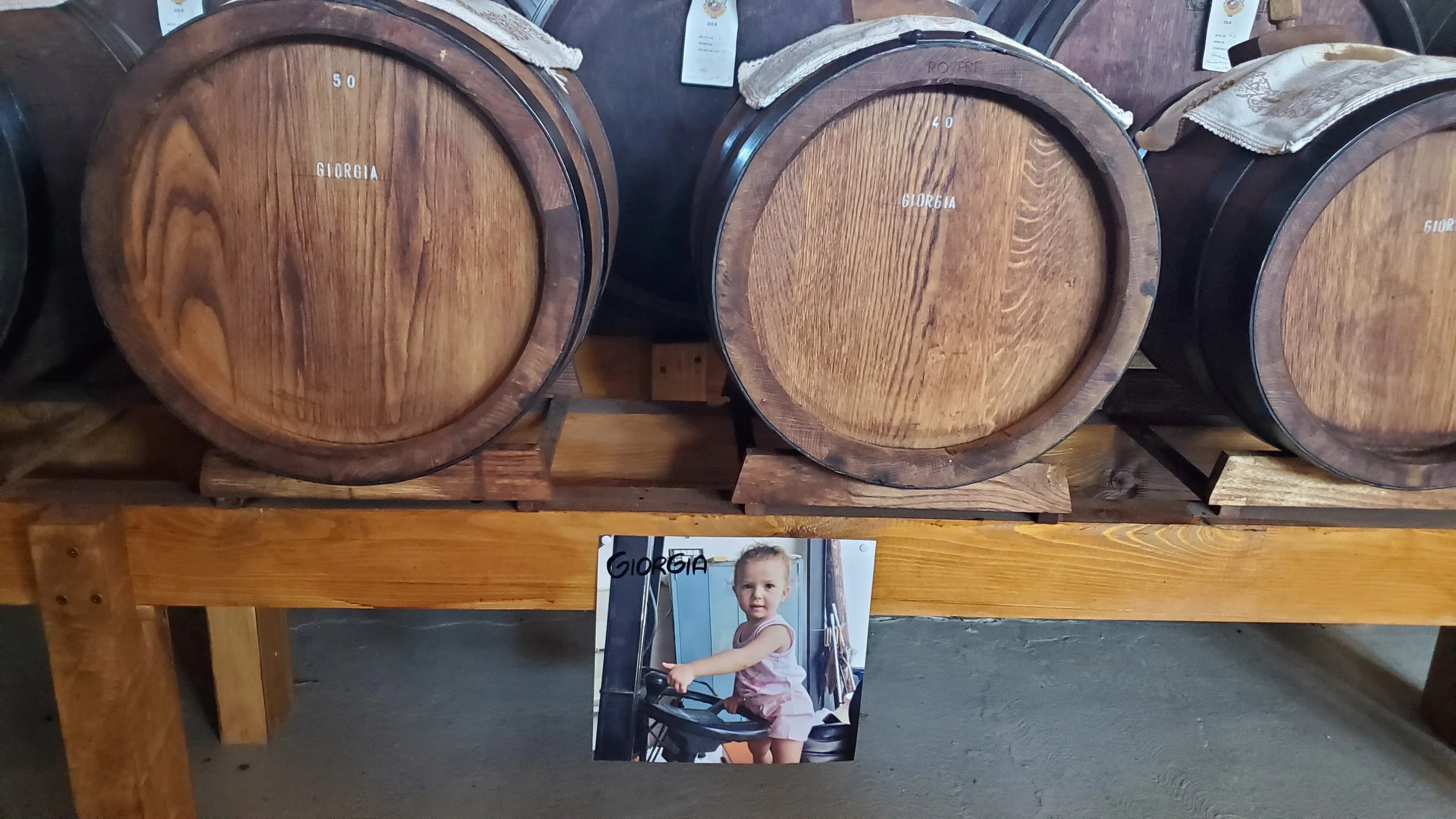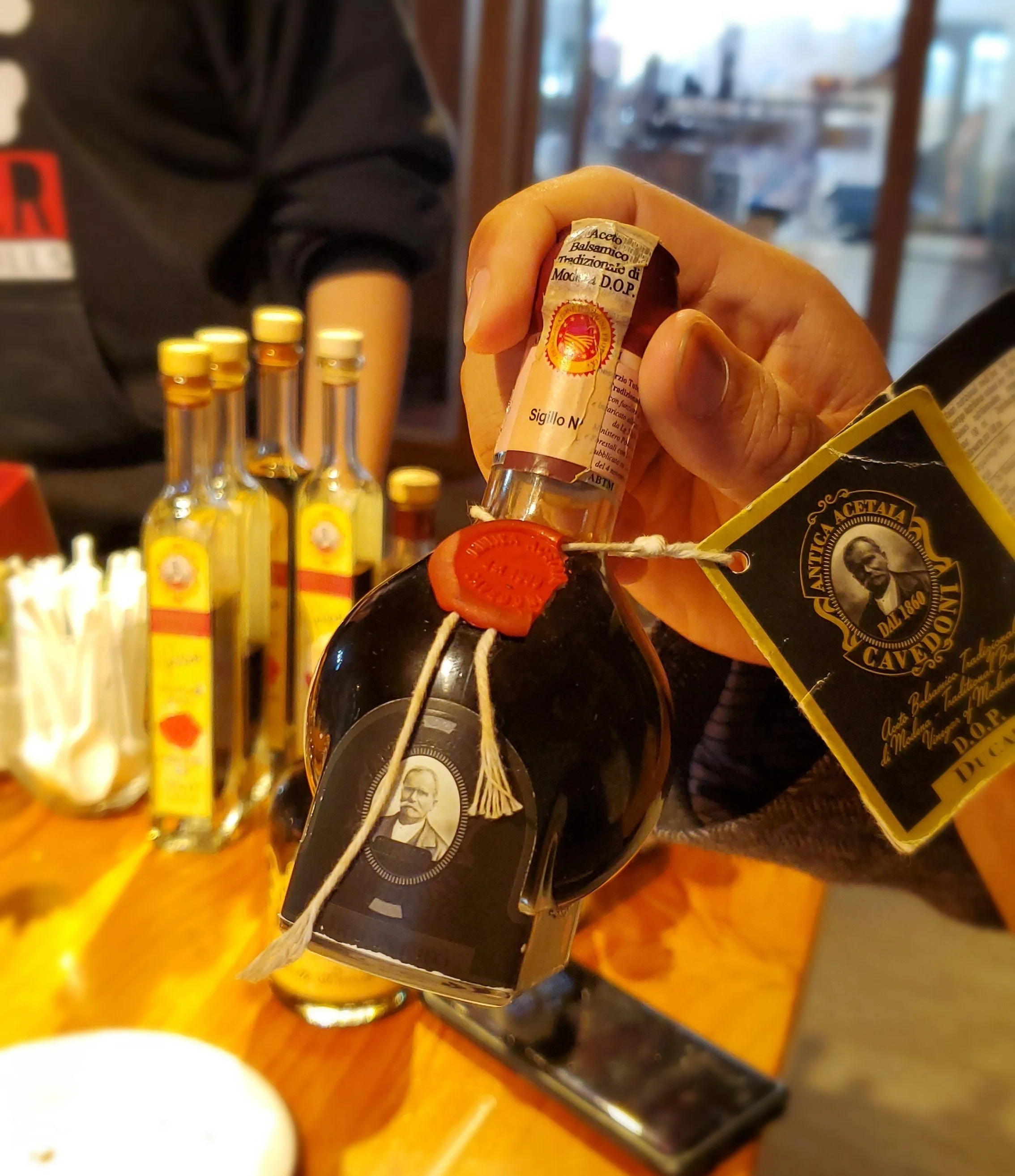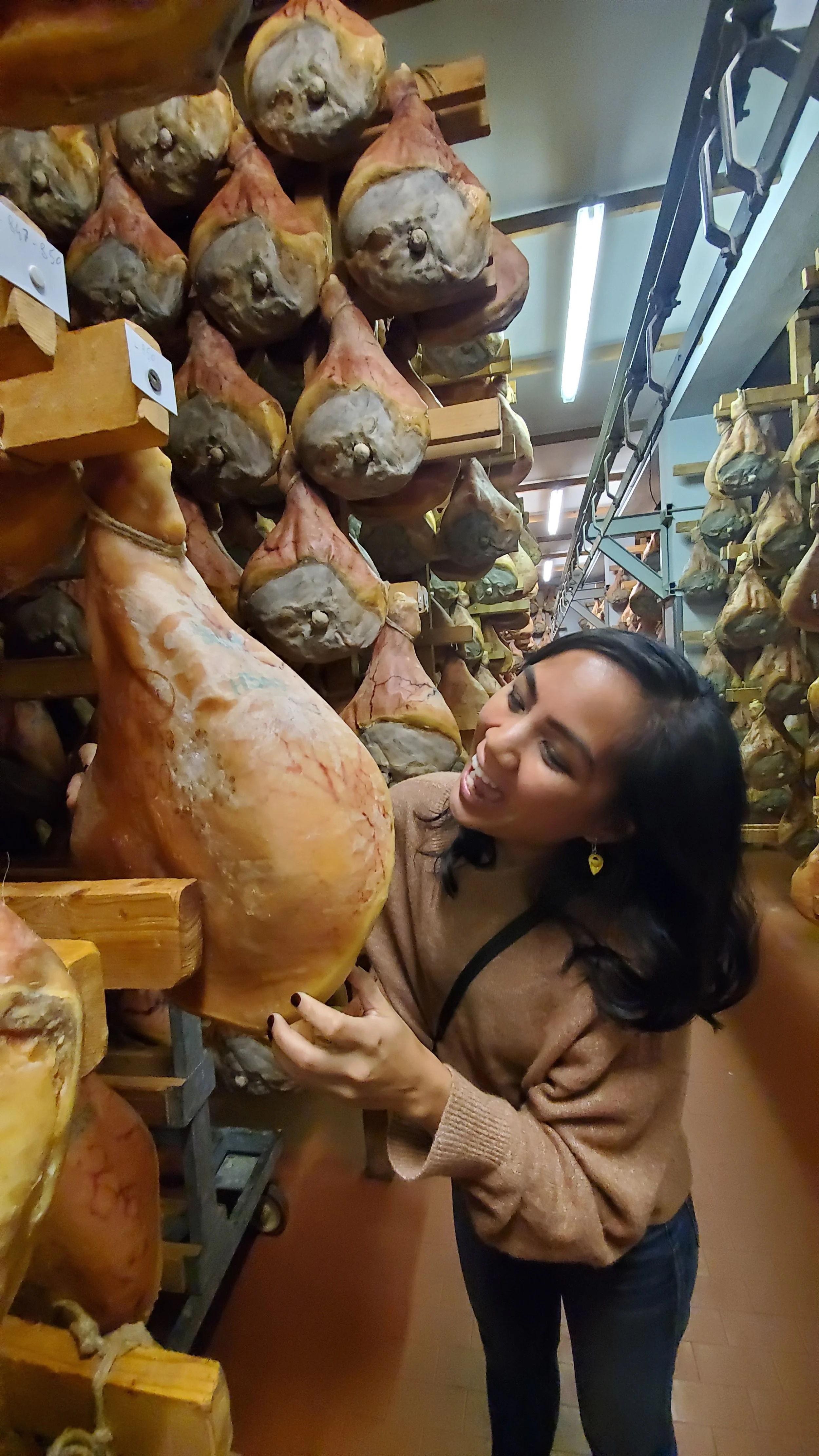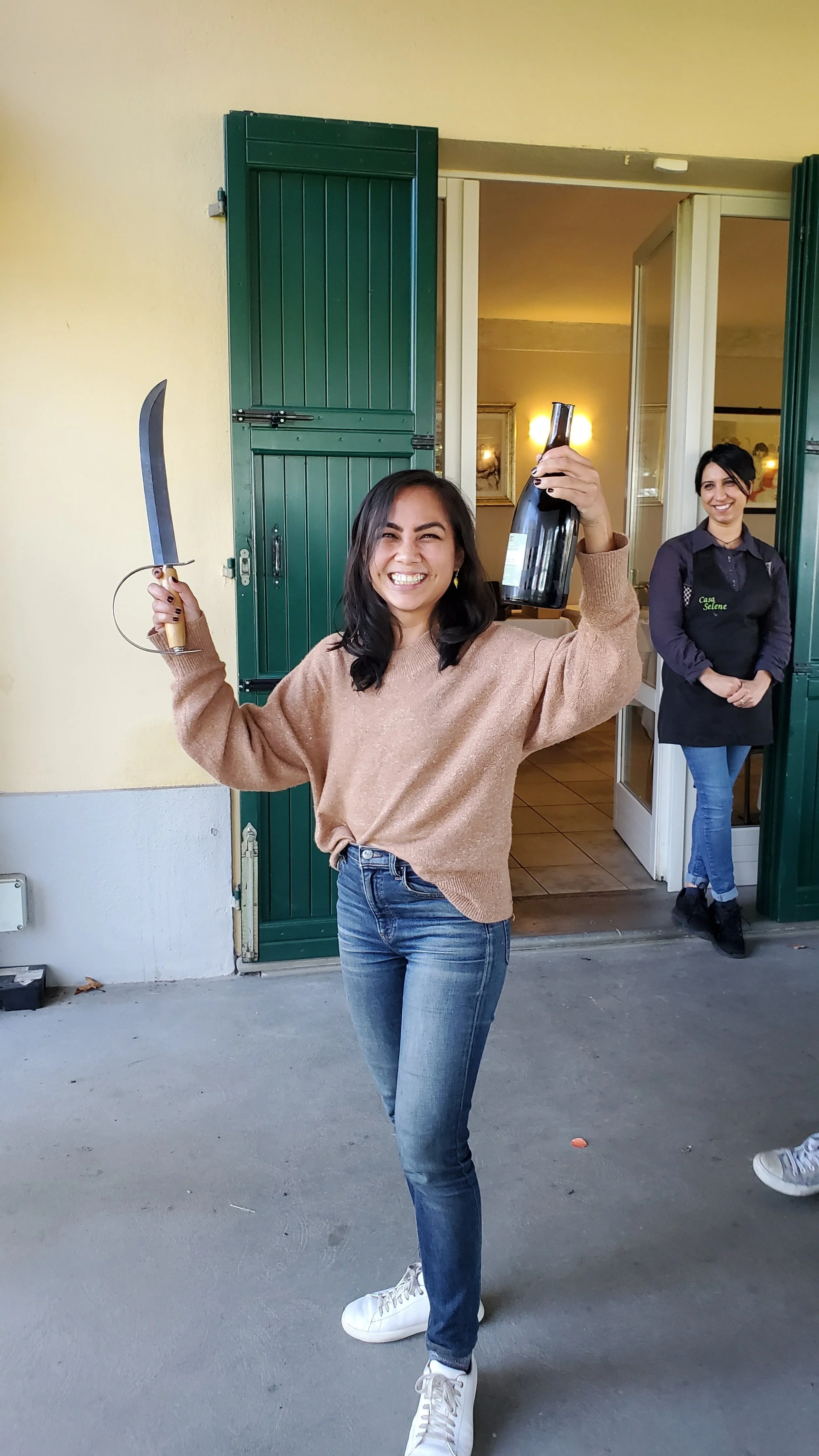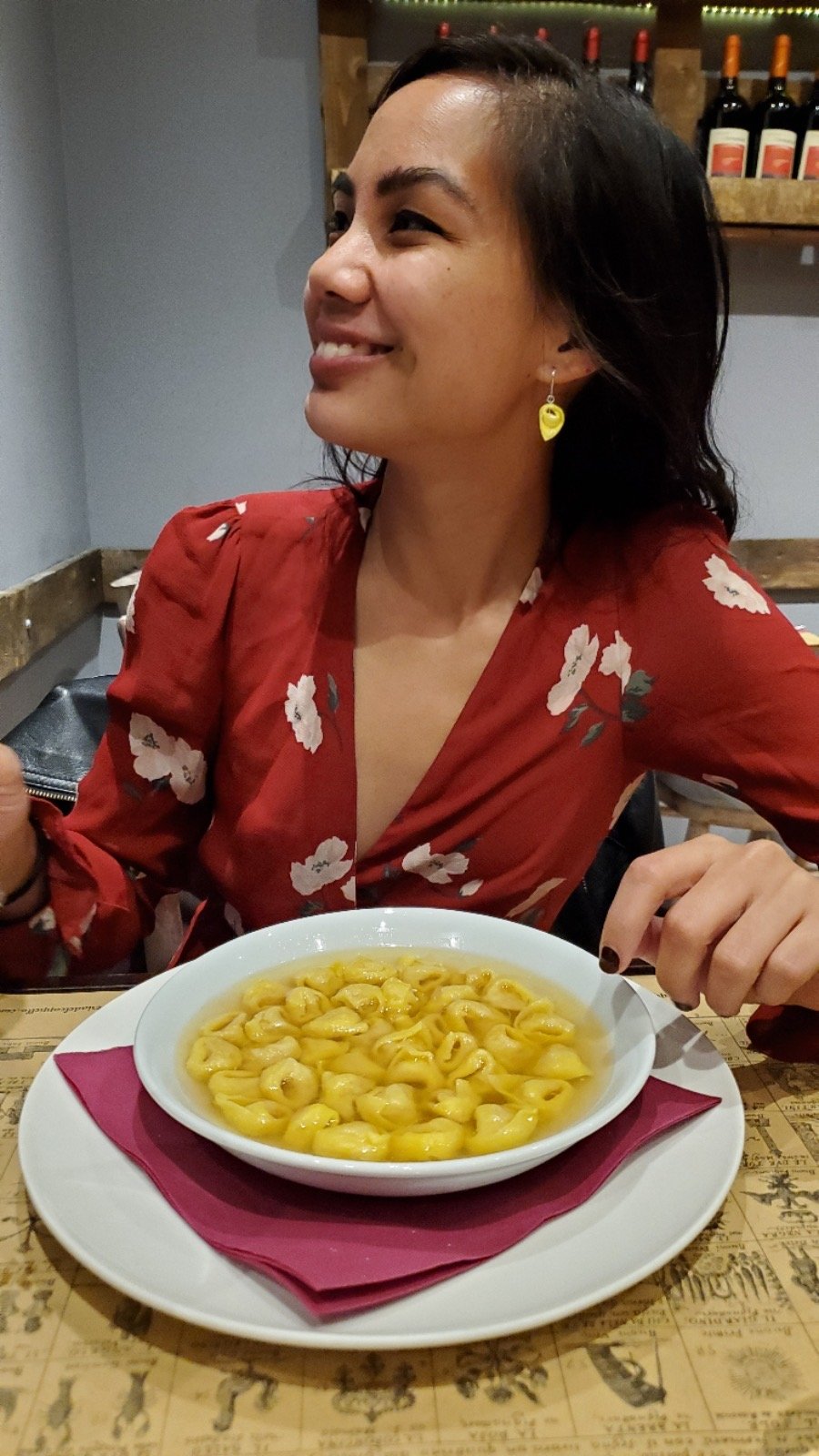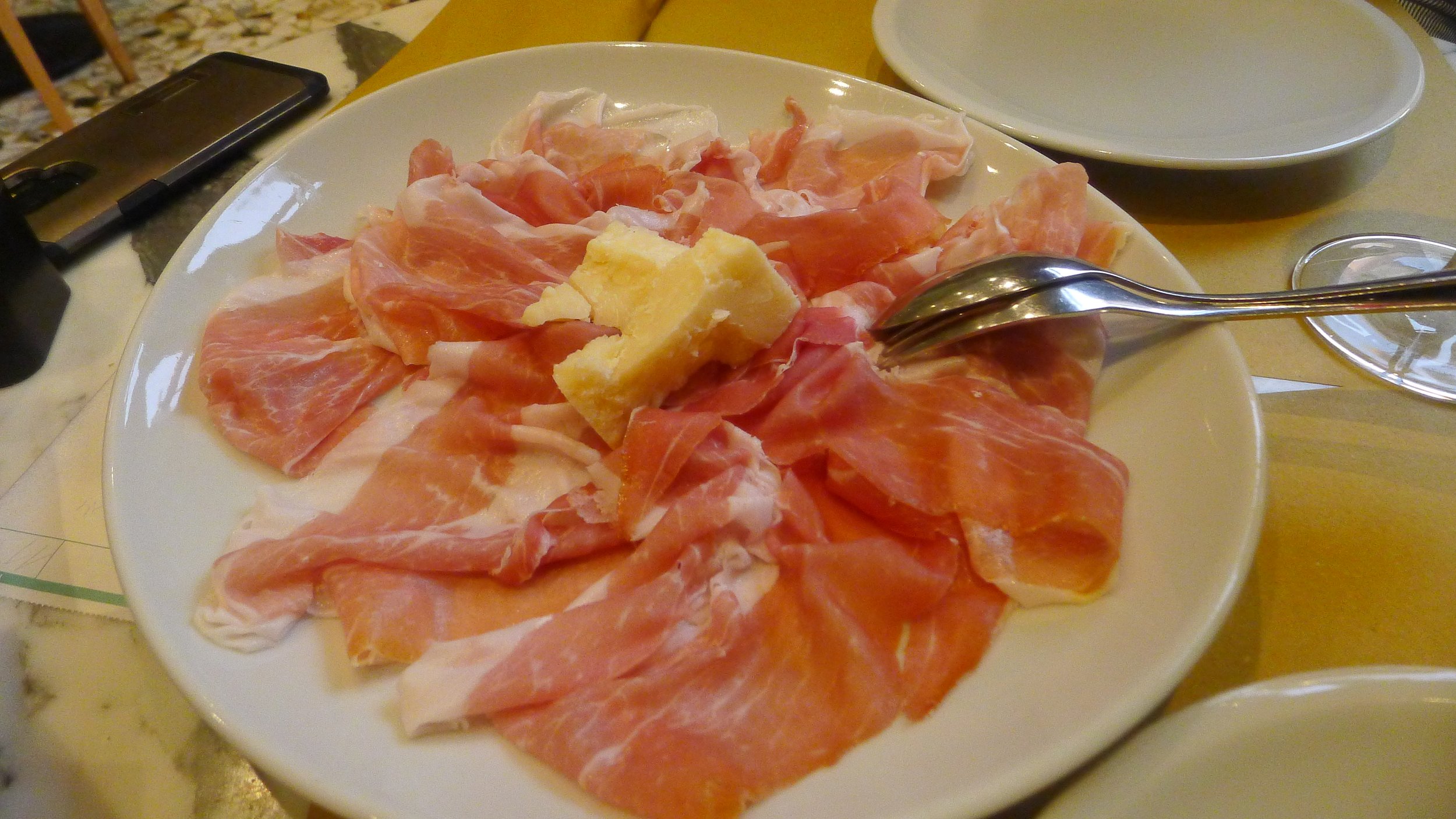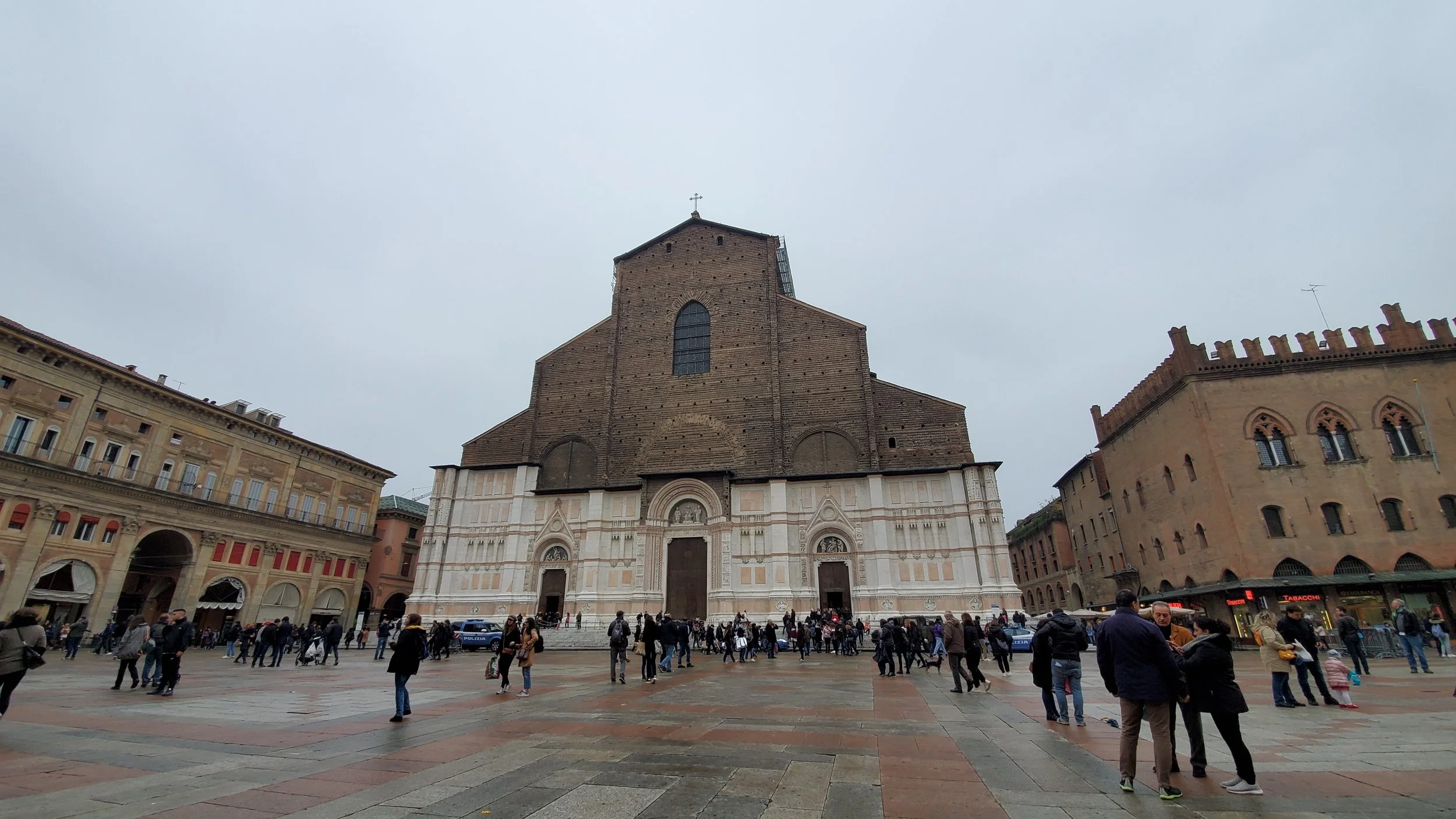Emilia-Romagna
I refused to spend my 30th birthday in the U.S., so I booked a last-minute flight to Milan for a brief trip to Emilia-Romagna. While this would be roughly my 7th time in Italy (it is my favorite country, after all!), this was my very first time in the region of Emilia-Romagna, the culinary capital of the country. Do you even like food if you haven’t been here?!
After an hour train ride from Milan, I arrived in the capital city of Bologna and immediately joined a free walking tour. The tour started at the University of Bologna, the oldest university in continuous operation, and Basilica di San Petronio, a church that is only half covered in marble. Apparently the Pope had gotten jealous of the size of this church, so he ordered marble suppliers in Carrera to stop the shipment of marble to Bologna and it was never completely finished.
Bologna is a city of porticoes. There's actually a law for each block to have them. Porticoes make so much sense, especially in the rain or snow, and they make the entire city pedestrian-friendly.
Do
What to do in the culinary capital of Italy?
Take a cooking class: A former chef Dennis taught our intimate class how to make five different pastas (tagliatelle, ravioli, tortellini, garganelli, and agnolotti) and five fillings (various mixtures of ingredients such as Ricotta, spinach, potatoes, bergamot oil, truffle oil, and Parmigiano-Reggiano). For some reason, I'm awful at rolling garganelli noodles (they kept getting stuck!) but can make a pretty good tagliatelle, which I loved magically unraveling off my knife before hanging on the drying rack. As we drank Chianti and snacked on Grana Padano, Parmigiano-Reggiano, and Ricotta, Dennis let us design our own fillings using his enviable collection of bottled oils.
Walk the porticoes: Bologna has the longest portico in the world. It runs from the edge of town up to the Basilica di San Luca, a church sitting up on rolling hills above the city. The pilgrimage is a steady uphill walk through ornate covered porticoes – 666 of them in all! – stretching 4 kilometers. This walkway was built in 1674 as a way to protect the Madonna di San Luca as she was carried on her yearly visit into town. Many Bologna residents use this as a walking path or exercise run, and I enjoyed seeing so many locals out and about on a Sunday morning.
Visit Parma: I caught a 51-minute train ride to Parma, an elegant, compact city that’s also part of Emilia-Romagna. It’s famous for Parmigiano-Reggiano and Prosciutto di Parma, being the home of Barilla (the world’s biggest pasta maker), and was the first city in Italy to be named “Creative City for Gastronomy” by UNESCO. Besides food, it’s also known for its artists—such as opera composer Giuseppi Verdi, Renaissance painter Correggio, and conductor Arturo Toscanini—and is the headquarters of Ferrari, Maserati, and Lamborghini. Yup, good food, opera, and fancy cars. You can sense the affluence as soon as you set foot here. Check out the stunning Correggio dome in the Parma cathedral. The fresco of the assumption of Mary is bursting with color even today.
But the absolute best thing to do in Emilia-Romagna…
Take a 10-hour food tour with Italian Days: This tour was one of the best experiences of my life. My tour drove for about 40 minutes to the tranquil countryside of Modena. Our first stop was a Parmigiano-Reggiano factory, at which we were greeted with espresso and given disposable robes, hair caps, and shoe covers to wear for sanitation purposes. We watched the painstaking process of making official Parmigiano-Reggiano and learned the vast differences between Parmesan and Parmigiano-Reggiano D.O.P., which must be aged for at least 12 months and will have the official Parmigiano-Reggiano branding on its rind if it passes inspection. Inspectors come to the factories and tap different sections of the cheese wheel, listening for any flaws. If a Parmigiano-Reggiano doesn’t pass inspection, it is stripped of its rind and sold as grated “Parmesan” — no longer deemed worthy of the name Parmigiano-Reggiano.
From there, we drove down the road to Antica Acetaia Cavedoni, where the Cavedoni family has been producing balsamic vinegar since 1860. Only 150 families are allowed to produce real balsamic vinegar (aceto balsamico tradizionale di Modena D.O.P.), and they all live in this region. Each bottle is made from a set of barrels designated for a specific family member as soon as he or she is born, which is why the barrels were traditionally used as a dowry. Bottles are only sold to the public when that specific family member passes away. Who knew balsamic vinegar was so personal?!
The highest quality of balsamic vinegar is D.O.P., which is made of only cooked grape must and aged for at least 12 years. To produce one bottle, 10,000 kilos of Trebbiano grapes are used. Families must send their balsamic vinegar to a consortium and pay €200 for inspection. If it passes, they must pay another fee for the bottle, since D.O.P. balsamic vinegar is only allowed to be in a specific type of bottle, and another fee for the special label (a red label for 12-14 years of aging, a gold label for over 15 years of aging). After all those fees, families must pay a 54% tax on any sales. Clearly, this is a passion, not for profit.
After our balsamic vinegar tour, we sat around a cozy table, eager to finally try some food. We started with Lambrusco and Parmigiano-Reggiano, Prosciutto and Mortadella, and finally ended with balsamic vinegar. D.O.P. balsamic vinegar is sweeter, thicker, and less sour and acidic than the balsamic vinegar most of us are used to—which is a blend of wine vinegar, cooked grape must, and usually caramels/preservatives to fake the fact that the vinegar hasn’t been aged anywhere near long enough. I.G.P. is another type of balsamic vinegar produced in this region, identifiable by its blue/yellow label. It may have more than just two ingredients and can age for a minimum of only 2 months, but the good ones are only cooked grape must and wine vinegar, and aged for at least five years. Condimento falls somewhere between D.O.P. and I.G.P. I ended up purchasing a 3-ounce bottle of 15-year-old D.O.P. for $68 and a 3-ounce bottle of condimento for $38 — a bargain after learning about this industry, and after comparing the prices I’d be paying in the U.S.
Our third stop was a Prosciutto factory hidden in what looked like a normal three-story house. Prosciutto di Parma can only be produced from the hind legs of specially selected heritage breed pigs raised in 11 regions of Italy according to the highest standards, on which they are monitored, inspected, and approved by a consortium. The hind leg is cleaned, salted with only Italian sea salt, and cured for about two months. During this time, it’s massaged carefully to drain all the blood left in the meat. Next, it is washed and hung in a dark, well-ventilated environment. The surrounding air is important to the final quality of the Prosciutto. When ready, an inspector comes in and uses a horse bone to poke into the hind leg at various points and sniff it for quality. Only after the Prosciutto passes can this smell test can it have the D.O.P. stamp. I sampled some Prosciutto di Parma with a glass of Lambrusco, and it was easily the best Prosciutto of my life.
Our final stop on the tour was an agriturismo up on the hills overlooking the Emilia-Romagna countryside. Agriturismi (“farm stays”) are popular in Italy. We sabered some bottles of Lambrusco, and a nonna prepared us a seven-course meal of pasta, veal, meatballs, chicken, zucchini, potatoes, and unlimited wine. Since we had been spending the past seven hours together, my tour group felt like old friends by this time.
Eat
Tagliatelle al ragù and tortellini in brodo are two of the most iconic Bolognese pasta dishes. According to legend, Tagliatelle was created by a chef in love with a noblewoman named Lucrezia Borgia, and the noodles represent her long blonde hair. These flat, thick, ribbon-like noodles are best served with a rich sauce like ragù (also called “bolognese”). Such a thick sauce should always be served with a thick noodle that can handle it, which is why anytime you see "spaghetti bolognese" on a menu, you should run away from that restaurant immediately. Meanwhile, tortellini is a cute little stuffed pasta that represents the navel of Venus and is best served “in brodo” (in a chicken on vegetable broth).
Other Bolognese specialties are Gramigna alla Salsiccia (short, squiggly hollow pasta noodles with sausage and tomatoes), Squacquerone (a soft, creamy cheese), Tigelle (a flatbread baked in a round electric griddle), Gnocco Fritto (a puffy fried bread), and Mortadella (what Americans call “baloney” but is on a completely different level from what you can get in the U.S.).
And of course, try the Parmigiano-Reggiano, aceto balsamico, and Prosciutto di Parma—all washed down with Lambrusco, the sparkling red wine of this region that’s perfect for cutting the fat.
When a region is this competent at food, you don’t even have to try finding a specific restaurant; you can stumble into anywhere and have the best Prosciutto and tortelli (large tortellini) of your life.
Tips
Tips
Hike the Portico di San Luca (the longest portico in the world) and climb the Torre degli Asinelli (the twin towers of Bologna). Both offer great views and a way to work off all the pasta you've been eating.
Eat: Tortellini in Brodo, Tagliatelle al Ragù, green lasagna, Mortadella, Gramigna alla Salsiccia, Prosciutto di Parma, Parmigiano-Reggiano, gnocco fritto, balsamic vinegar, tigelle, and gelato (while gelato wasn't invented in Emilia-Romagna, the best gelato of my life was at a gelateria in Bologna called OGGI)
Drink: Lambrusco, Pignoletto (Emilia-Romagna’s Prosecco)
If there’s only one thing you get from this entire post, it’s that you should take the Food & Wine Tour with Italian Days. It is hands down the best food tour I have ever been on -- and I’ve gone on food tours everywhere (Rome, Cairo, Sevilla, Mexico City, Palermo…). It starts at 7 am and ends around 5:30 pm. There were ten of us in total, and we rode in two comfortable Mercedes vans between each site. Our tour guide Arianna was spectacular. I wish she could narrate my life! She had an infectious energy throughout the entire day, and taught us so many things we never would have learned on our own. The tour changed the way I eat food, appreciate Italy, and view the world.
